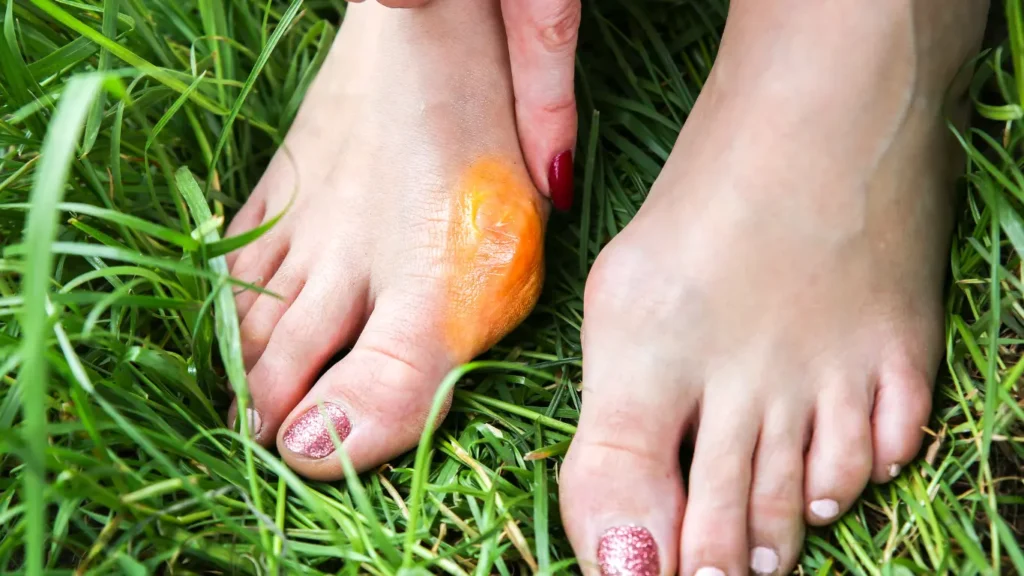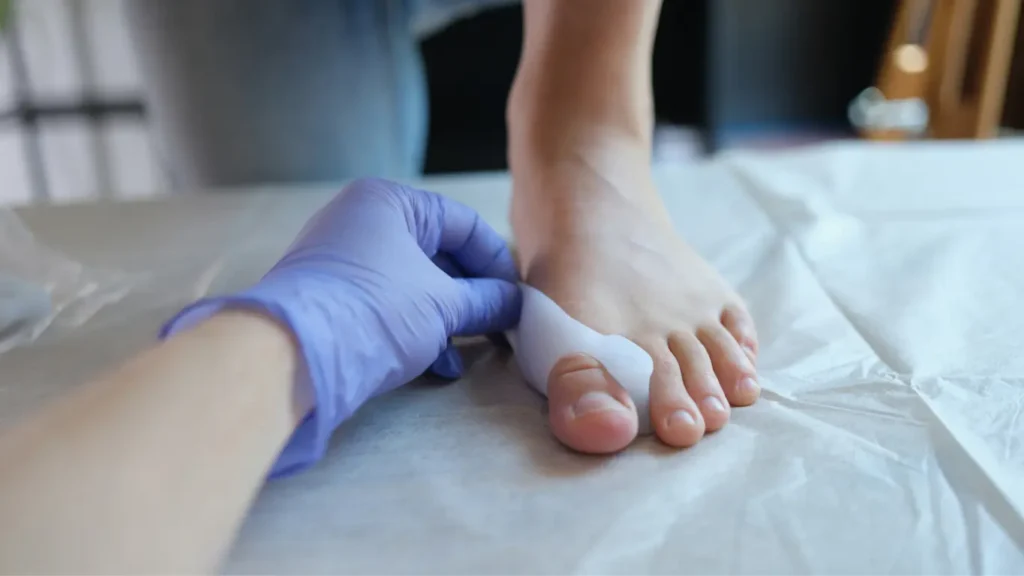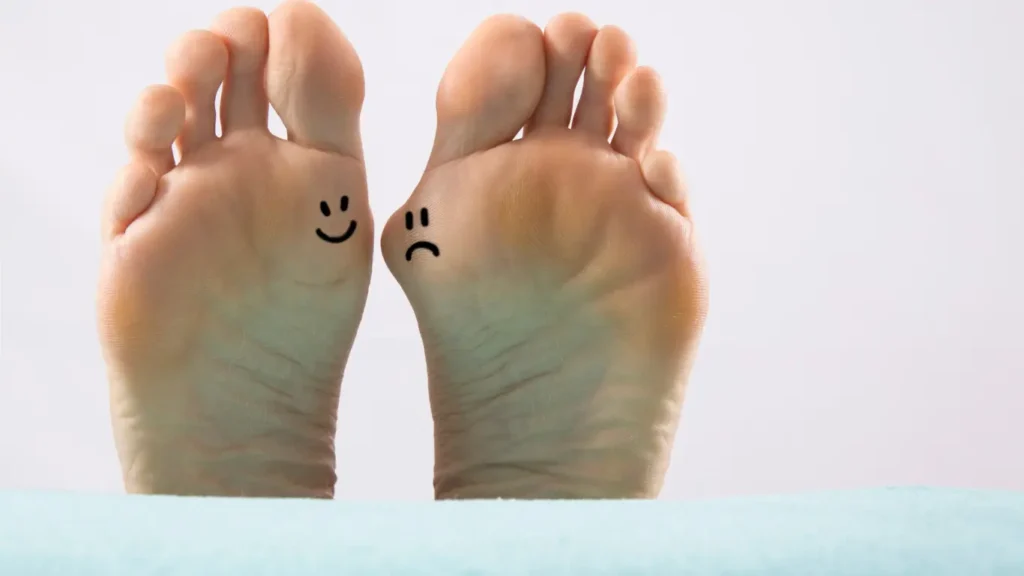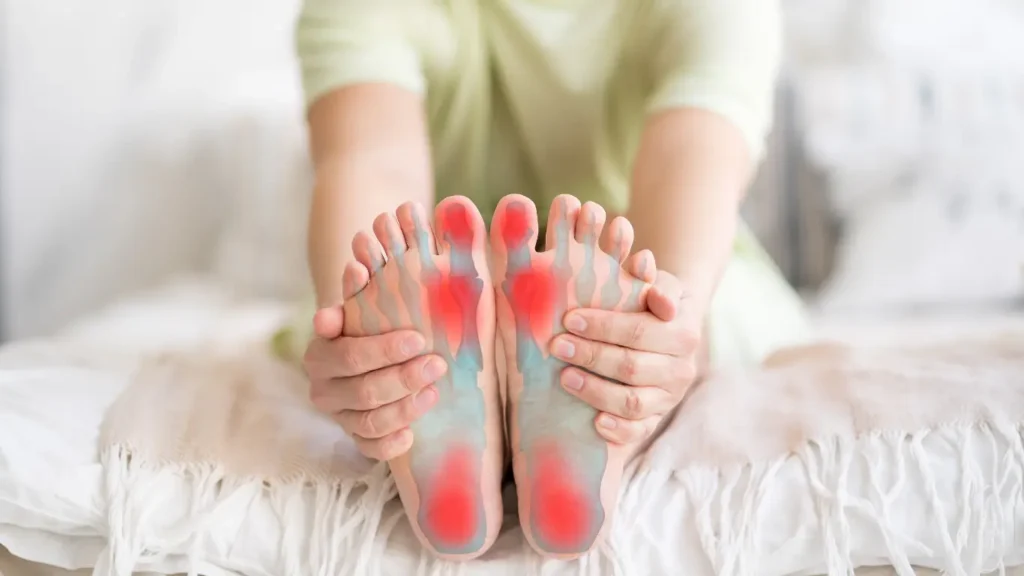You’re out for a night on the town, with heels that make you feel like a million bucks. But suddenly, you feel a familiar pain – a strong throbbing at the bottom of your big toe, like a little troublemaker trying to spoil your happy moment and turn it into a not-so-fun ride. Bunions, those bony bumps that turn even the cutest shoes into foot torture devices, can put a real damper on your fun.
2024 is the year to conquer your bunion problem with the help of the experts at Platte River Foot and Ankle. We’re here to empower you with the knowledge and support you need to ditch the discomfort and reclaim your pain-free parade.

Causes:
Bunions typically develop when the joint at the base of the big toe becomes misaligned, causing the big toe to angle inward toward the other toes. This misalignment can result from various factors, including:
- Genetics: Bunions can run in families, indicating a genetic predisposition.
- Footwear: Tight, narrow shoes or high heels can exacerbate bunion formation or make existing bunions worse.
- Foot Structure: Certain foot shapes, such as flat feet or low arches, may increase the risk of developing bunions.
- Injuries: Trauma to the foot or toe can sometimes lead to the development of it.
Treatment:
Options for bunions treatment aim to relieve pain, improve foot function, and prevent further progression of the deformity. Depending on the severity of the bunion, treatment may include:
- Orthotics: Custom orthotic devices can help redistribute pressure on the foot and alleviate discomfort.
- Footwear Modifications: Wearing shoes with a wider toe box and low heels can reduce pressure on the bunion.
- Medications: Over-the-counter pain relievers or anti-inflammatory medications may help reduce pain and inflammation.
- Physical Therapy: Specific exercises can strengthen the muscles around the bunion and improve joint mobility.
- Surgery: In severe cases where conservative measures fail to provide relief, surgical correction of the bunion may be necessary.
Prevention:
While bunions have a genetic component, certain preventive measures can help reduce the risk of their development or slow their progression:
- Choose Proper Footwear: Opt for shoes with a wide toe box and adequate arch support to prevent unnecessary pressure on the toes.
- Maintain a Healthy Weight: Excess body weight can exacerbate bunion symptoms, so maintaining a healthy weight can help reduce the strain on your feet.
- Avoid High Heels: Limit wearing high heels, as they can force the toes into a cramped position.
- Regular Foot Care: Practise good foot hygiene, including keeping your feet clean and dry, trimming toenails properly, and moisturising dry skin.

The Bunion Breakdown: Stats
Bunions are surprisingly common, affecting 33% of women and 18% of men worldwide. But here’s the good news: a 2023 study suggests that early intervention is key. Researchers found that switching to wider shoes and supportive inserts early on can significantly slow down bunion progression.
According to recent studies, approximately 23% of adults aged 18-65 and 35% of adults over 65 are affected by bunions. These statistics highlight the significant prevalence of this foot condition and the importance of understanding its causes and treatment options.
Schedule an appointment with Platte River Foot and Ankle Specialists today and step into a world of pain-free comfort!
Platte River Foot and Ankle Specialists: Your Partners in Bunion-Free Bliss
At Platte River Foot and Ankle, we understand the impact bunions can have on your life. That’s why we’re dedicated to providing compassionate, expert care, designed to your unique needs. Our team of highly qualified foot and ankle specialists in Nebraska will work with you to develop a treatment plan that gets you back to pain-free living, whether it’s conservative measures, advanced therapies, or minimally invasive surgery.
In conclusion, bunions can be a source of discomfort and inconvenience, but with the right approach to treatment and prevention, individuals can manage their symptoms effectively. By staying informed about the latest developments in foot health and seeking guidance from our foot and ankle specialists, individuals can take proactive steps towards addressing bunions and maintaining optimal foot health.




